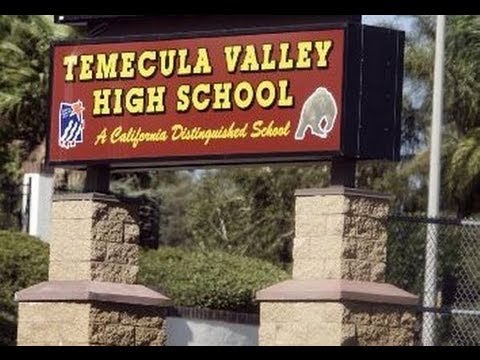Rescuing Public Education in California
California’s state legislature is a place where big ideas go to die, especially when it comes to education
By Edward Ring, March 10, 2021 10:35 am
Depending on who you ask, California’s K-12 system of public education would be doing just fine if taxpayers threw another $30 billion (or more) per year into its insatiable maw; or it is a failed model mostly because the teachers’ union agenda has ruined everything, from a crippling administrative overhead to mandating a curricula more obsessed with leftist indoctrination than with basic education.
In either case, though, there is agreement that big changes are necessary in order to restore to California’s K-12 students an education that offers them the skills and personal growth that will prepare them for life in the 21st century.
Big challenges are best addressed by big ideas. But California’s state legislature is a place where big ideas go to die, especially when it comes to education. Fortunately there is another path, which is through a state ballot initiative.
There is precedent, in the form of Prop. 38, a school voucher initiative that was put before California voters in 2000. It would have required the state to pay $4,000 per year per pupil attending private or religious schools, while greatly reducing the regulations governing the schools. The overall financial impact was unclear, with the possibility that in the long-run, public spending on K-12 education might actually decrease, since the $4,000 payment might be just enough to induce significant numbers of parents to shift their children into private and religious schools, allowing the much more expensive public school system to shrink.
While Prop. 38 was easily defeated by the unions that lined up against it, the creativity of the proposal illustrates how many options are available to a determined coalition of reformers. And while voters weren’t ready for radical education reform back in 2000, they may be more than ready in 2022. The success of in-home learning, the new distance learning tools, the ridiculous curricula being mandated these days, and the shameful behavior of the teachers’ union over the past year have primed California’s electorate. They may just need to be presented a thoughtful, viable product. What form could it take?
Restructuring K-12 Education – Implement Vouchers/ESAs
There are two ways to restructure K-12 public education in California. The first takes the form of vouchers, or, to put it into terms more palatable and less pre-stigmatized by the unions, a new system “where the money follows the student.” An education savings account (ESA) is set up for every family with children who are between kindergarten and 12th grade, and the money is paid to whatever school they attend – private, parochial, public, public charter, “micro-school” or homeschool.
The particular details of such a proposal were worked out in SB 1344, introduced by Senator John Moorlach in 2018. While this bill never made it out of committee (what a surprise), it was thoroughly researched and offers raw material to build on. SB 1344 would have created education savings accounts funded with the state’s existing “basic grant” for eligible children which currently is over $10,000 per year. The money would go to any accredited nonprofit private school. If the basic grant was not used up by a family, it would accrue in their ESA to be used for college. Home schoolers would not be able to collect the basic grant, but the money would accumulate in their ESA and could be used for college.
One group that is working on a education reform initiative for November 2022 is the the California School Choice Foundation, based in Pasadena. Michael Alexander, president of the foundation, identified four key provisions:
1 – An education savings account would be created for every K-12 student in California.
2 – These accounts would be credited annually with each student’s pro rata share of Prop. 98 funds (40% of the California General fund).
3 – The parents of K-12 students will be able to direct that money to a participating school whether it’s a public, charter, or accredited private or parochial school.
4 – The money, if unspent, would accumulate to be used for college, vocational, or any other accredited educational expense.
Alexander acknowledged there is much still to be worked on in such an initiative. For example, there would have to be a way for schools to bypass the many new state curriculum mandates that have alienated millions of parents. And there would have to be a provision that would prevent the state from using accreditation as a weapon to shut down competing public charter and private schools.
Restructuring K-12 Education – Empower Charter Schools
While education savings accounts might have a more sweeping impact, in the meantime California’s charter schools need help. With enrollment stalled now for several years at around 10 percent of California’s roughly six million K-12 students, charter schools face a gauntlet of obstacles to being opened and staying open, thanks to a legislature in thrall to the teachers’ unions.
With the passage of AB 1505 last July, the future of charter schools in California is more uncertain than ever. Aggressive advocacy in support of charter schools appears to be nonexistent, since even the California Charter Schools Association, inexplicably, took a “neutral” position on AB 1505. The provisions of this law are pretty bad. In particular, it makes it possible for any school district to deny a charter school application or renewal. It allows districts to close charters that cause “negative financial impact” to school districts. It requires all charter school teachers to have state teaching credentials, and it places a moratorium on opening additional virtual charter schools.
That this disastrous law was heralded as a “compromise” by the media and by advocates for charter schools shows just how powerful the teachers’ union has become in California. Apparently it could have gone much worse. Every one of these provisions is flawed, starting with the absurd contention that charter schools have a negative financial impact on traditional public school districts.
California’s public schools, especially in the immigrant communities and inner-city neighborhoods of Los Angeles, are overflowing. The teachers’ union can’t have it both ways: Either they need smaller classroom sizes, or they want to get rid of charters. Whenever a charter school opens, presumably the classroom size diminishes accordingly in the nearby traditional public school. And charter school funding passes through the districts, where they keep a portion of the per charter school’s student revenue, even though they don’t have to instruct those students. Therefore charter schools should improve the financial condition of school districts, while also relieving overcrowding.
Requiring charter teachers to have credentials is also a deeply flawed requirement. Often highly skilled and highly motivated professionals, either retired or making a career change, become teachers in charter schools. They often offer inspired, expert instruction to students. Forcing them to take a year or more to earn a state teaching credential will deter many of them from ever deciding to teach.
Equally harmful is to deny applications to start new virtual charter schools. The advances in distance learning mean cost-effective virtual instruction has arrived, and when matched with parents that want the in-person instruction of pod schools and the resources of a major charter institution, virtual education is a revolutionary innovation. The only reason the teachers’ union opposes this breakthrough is because it is, like all charter schools, a threat to their monopoly on public education.
Here are some of the provisions that would be included in an initiative constitutional amendment to protect charter schools and stimulate their growth:
1 – Charter schools can be approved by the following entities: The state board of education, any county board of education, any school district school board, and any public or private accredited university.
2 – Charter school permits shall be granted for 15 years – this in order to make it easier for charter schools to secure financing to build or remodel school facilities.
3 – There will be no cap established by the state or any public agency on the number of charter schools, or the number of charter school students.
4 – Virtual charter schools that support pod schooling or micro-schools shall not have their applications denied on that basis.
5 – Renewal applications for charter schools that are denied by school districts shall have the right to appeal to any county, state, or university-based authorizing entity.
6 – No charter school application or renewal shall be denied on the basis of the financial impact it will have on the school district in which it is located.
These points, like those that might better enable the establishment of education savings accounts, need a lot of work. But reforms are necessary if charter schools are to resume a trajectory of growth in California.
Charter schools enjoy passionate support among the communities, mostly in disadvantaged neighborhoods, where they have changed the lives of the students and families they serve. But among the broader electorate, there is less awareness of their benefits, and voters are vulnerable to the union canards of profiteering (false, they’re all nonprofits), fiscal harm to public schools (false, if anything they help the overcrowded inner-city schools), and selectivity (false, students are admitted via lottery.
One way to expand the appeal of charter schools to voters would be to emphasize the ability of charter schools to minimize curricula that has enraged parents across all demographics – namely, Common Core math instruction, victim group indoctrination instead of history, and politicized, agenda-driven sex education. Another way to expand the appeal of charter schools is to emphasize the breakthrough potential of virtual charter schools offering the resources needed by the burgeoning network of pod schools and micro-schools.
Californians can continue to allow a public sector union to wield monopoly power over the billions that flow each year into the state’s K-12 system of public education, or they create competition either in the form of vouchers/ESAs or in the form of a greatly streamlined process to enable new charter schools. The initiative process makes that choice real. But if that choice is to face voters in November 2022, then by the end of this year proponents will have to submit a ballot proposition to California’s Secretary of State. It must be in the form of an initiative constitutional amendment that will withstand withering court challenges.
Can they do it? Who will step up? And if so, what form will it take?
- Ringside: EVs and California’s Future Demand for Electricity - December 4, 2025
- Ringside: Politically Viable Water Supply Projects - November 27, 2025
- Ringside: Shifting Costs Does Not Solve California’s Electricity Shortages - November 20, 2025





I agree —- the time IS ripe now. Much has been revealed in the past year about the public school system and the unions and the whole big mess and it hasn’t exactly been a flattering picture, has it? Sounds odd to say, perhaps, but it also seems as though we should be glad the picture has come into sharp focus the way it did because no amount of talking and lecturing and trying to inform people in the usual ways would have worked as well. Parents needed to see it and live it for themselves. It will be interesting to see what happens now.
The model to follow is the classic education charter school in Orange County.
Chumps
This subject is hilarious….nothing ever ever will change….we need gardeners, culinary slaves, retail zombies, maids, farm help, car washers, meat cutters, janitors, tourism and fast food low skill labor…….
Wake up…..Calif. is a service economy of ball cap and apron jobs.
Just decertify the damn unions and get on with our lives!!!
Letting us take our education money out of public schools is fine but does nothing to fix the public school system itself. (Also $4000 wont go very far towards a private school tuition.) Mr. Ring, are the public schools fixable, and if so, how?
With districts like Los Angeles that are overwhelmingly minority, poor, and non-English speaking— and apparently California has a teacher shortage— I don’t see a solution. And new illegal children are pouring over the border every day. The issue of education is inextricably linked with immigration. But it is not politically correct to bring that up.